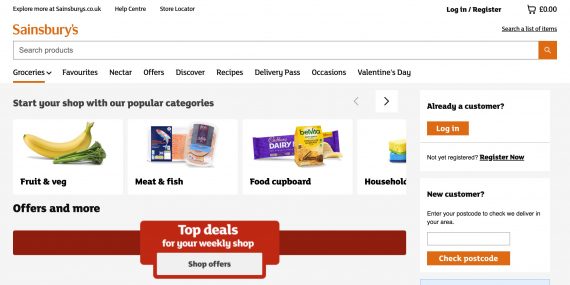How To Save Tons of Time With Instagram Auto Reply

Instagram emoji are pictograms, icons, or small images used to express an emotion or idea. Some are universal while others have unique interpretations.


Instagram emoji are pictograms, icons, or small images used to express an emotion or idea. Some are universal while others have unique interpretations.




A comprehensive social media report proves the value of your social marketing plan. It shows what you’ve accomplished, backed up by data.




It can be a struggle to provide quality, efficient social media customer service, but its more important than ever before.




Facebook Messenger is one of the most important messaging apps brands use to connect with customers worldwide. Make sure you’re using it correctly.




It can be a struggle to provide quality, efficient social media customer service, but its more important than ever before.




It can be a struggle to provide quality, efficient social media customer service, but its more important than ever before.

As a business expands and order volumes grow, customer queries increase. Ensuring the queries are addressed promptly and accurately becomes crucial in fostering repeat sales. Key performance indicators for customer service teams — internal or external — are essential.
I’ve managed customer service for a large online grocer. This post addresses the primary operational metrics for a customer service function.
Inquiry volume. The inquiry or ticket volume is the total number of incoming customer contacts, often segmented to the channel, such as phone, email, and live chat. Customer service software can label the types of inquiries — e.g., shipping problems, defective goods, warranties — to help correct broader issues.
Abandonment rate is the percentage of customers who leave an interaction before reaching a live advisor. It applies to phone calls and live chat. High abandonment rates indicate prolonged wait times, which can frustrate customers and lead to lost orders.
Average wait time measures how long a customer must hold to reach an advisor. For phone calls, the time is calculated from the first ring until a live advisor answers, including any time spent listening to automated messaging. Extended wait times often coincide with higher abandonment rates.






Implementing key performance indicators for customer service teams is essential for ongoing improvement.
First response time is similar to wait time but applies to channels such as email and social media where an instant reaction is not expected. On social media, the time starts with the customer posting the query and ends when the business responds, even if the query requests more information.
It is worth noting that online consumers increasingly expect quick resolutions. Here are acceptable wait times in 2023 according to Zendesk, the customer service software provider:
Social media
Live chat
Average handling time is the period spent answering a single inquiry, such as a call, web chat, or social media response. Long handling times can point to a need for additional advisor training or complex queries arising from insufficient website details. Conversely, exceptionally short handling times can raise concerns around response quality and should be viewed alongside the first contact resolution rate.
First contact resolution refers to the percentage of total inquiries resolved at the first point of contact within a specified period. A high FCR suggests customer issues were fully resolved. A low FCR can indicate problems with response quality or that advisors are handling complex cases.
Time to resolution tracks cases from start to finish, accounting for investigations and follow-ups. Time to resolution addresses queries that require dialog beyond the first point of contact.
Escalation rate is the percentage of queries referred to a manager or senior staff. Escalations should be infrequent. A surge in escalations suggests a broader issue, such as a product fault or poor frontline response.




Customer service, or at least good customer service, has declined drastically over the past few years. The situation will likely worsen as companies lay off call-center employees and customer-care turnover remains high.
The answer for many businesses is artificial intelligence. Can ChatGPT and other forms of conversational AI solve the customer care problem? Companies in various industries are willing to give it a shot.
In its tenth Customer Rage Survey of U.S. consumers, Virginia-based Customer Care Measurement & Consulting found in 2022 that 74% of respondents had experienced product or service problems in the past year — more than double the 32% in 1976.
According to the survey, only one in eight dissatisfied customers will recommend companies that do not resolve complaints. Among the most common complaints are long wait times on the phone.
For example, the U.S. Social Security Administration recently announced that telephone wait times to the national number might increase to 35 minutes (versus 14 minutes in 2021), and the response period for disability claims could stretch to 15 months. Years of decreased budgets and diminished staffing account for the service decline, per the SSA.
Many consumers prefer talking to a human via phone, but businesses are abandoning that method due to high costs.
For years companies have used chatbots for customer support. Voice-based chatbots are increasingly popular, aided by the widespread use of Siri, Alexa, and other virtual assistants.
AI-driven chatbots — text and voice — attempt to provide conversational, personalized responses. But the answers are often rote and do not address the questions. When asked again, the bots often repeat the initial reply. Nonetheless, a 2022 study from the technology research company Gartner projected that chatbots would be the main customer service channel for a quarter of all U.S. businesses by 2027.
When it publicly launched ChatGPT late last year, OpenAI stated the service is “designed to be able to generate human-like text and respond to questions and statements in a way that is similar to how a person would.” It quickly took hold as a panacea for seemingly every problem in every industry, with users often touting the results as better than humans.
In February, ResumeBuilder.com asked 1,000 U.S. business leaders if they use or plan to use ChatGPT.
The results:
Goldman Sachs echoes the layoff prediction, stating that generative AI could cause up to 300 million global job losses.
What’s less known is the potential productivity gains and job creation from conversational AI. Bonnie Low-Kramen, author of the book “Staff Matters,” says AI tools lack empathy and intuition and cannot replace people for customer service.
“Humans understand the nuances of why people want things and do things,” Low-Kramen said in an interview. “Humans have deductive reasoning that ChatGPT doesn’t.” She points out that AI is not good at adapting when things go wrong; it has no Plan B. Low- Kramen sees a hybrid model of humans and AI as a better approach.
Consumers want to feel valued, and having to deal with machines for customer service is often demeaning, according to Low-Kramen. Thus turning over all customer-service tasks to ChatGPT could cause a backlash. Not long ago, executives in developed countries outsourced customer service to call centers in regions with cheap labor. But high employee turnover and poor English skills resulted in inadequate service. Many companies have brought call centers back domestically.
ChatGPT might look like a cost-saving cure-all, but it’s not likely the magic bullet that rectifies poor customer service.

Ecommerce merchants know the importance of customer service. But technology and consumer expectations are changing, prompting many sellers to evolve how and where they respond to shoppers.
Here’s how six online retailers approach customer service in 2023.
Sainsbury’s. U.K. grocer Sainsbury’s uses a filtered approach to customer service. Shoppers answer questions to access contact options. This could frustrate folks who prefer the personal approach. But the advantage to Sainsbury’s is reduced staff by filtering out easily resolved queries through self-service support.
The range of contact options depends on the query type and includes phone, Facebook Messenger, Twitter, and a form. Sainsbury’s also offers British Sign Language via a video call.
—
Grind. Coffee brand Grind offers an email address as the primary way to get in touch. The site also has an FAQ page in an accordion format. That layout could be difficult to navigate as the content grows. Email remains the most popular customer service channel, per Statista. However, publishing the email address can result in many spam contacts. A form would be better.
—
Bloom & Wild. Online florist Bloom & Wild offers multiple contact options: live chat, contact form, Whatsapp, and Facebook Messenger. The site publishes the average wait time for live chat, indicating the preferred channel. Many businesses now use live, instant messaging as the primary contact option. It facilitates quick resolutions in a single interaction — avoiding the delays associated with email — and results in higher customer satisfaction and fewer open cases.






Bloom & Wild offers multiple contact options: live chat, contact form, Whatsapp, and Facebook Messenger.
—
LookFantastic. Beauty retailer LookFantastic provides a help center with an order tracker and multiple contact options — live chat, Apple iMessage, Facebook, and Twitter. “Where is my order?” is the top support query for online merchants in my experience. Thus emphasizing order tracking is a good way to reduce queries and improve the shopping experience.
—
Boardshop. Online surf store Boardshop offers a personal approach to customer service, providing a general email address, a form, and names of two support personnel on the contact-us page — plus a phone number and postal address.






Boardshop offers a personal approach on the contact-us page: a general email address, a form, and the names of two support personnel — plus a phone number.
—
Skin+Me. Subscription beauty brand Skin+Me operates customer service solely via email. The staff responds to Facebook comments but pushes customer service queries back to email rather than answering on the platform. This presumably helps the company but likely frustrates shoppers who cannot obtain instant answers.
Consumers’ service expectations are rapidly evolving. Businesses are experimenting with new approaches that reduce costs while improving the shopping journey.
Here are key takeaways:

Good customer service can be the difference between a one-time and a repeat buyer. But customers’ preferences vary as to their favored channel. Some prefer human interaction. Others seek self-serve or automated solutions.
What follows are eight common customer service channels with pros and cons of each.






Phone support is the most personal, but it’s resource heavy.
Pros: Telephones are the most personal support channel. Many shoppers want to speak with someone directly, particularly if they have a complex query.
Cons: Phone lines are resource-heavy. One alternative is a call-back service rather than a fully-staffed version.
Pros: Email is an existing channel for seemingly all businesses — whether via a single email address or a form. Consumers are comfortable with it, too.
Cons: A common frustration is in the slow response time. To mitigate, be transparent about the timing, both on your contact page and in an auto-response to new queries. Consider also referring customers to alternative channels, such as self-serve resources.
Pros: Self-serve portals such as FAQs and help centers allow customers to find quick answers to common questions, reducing inbound business queries. Plus, the options require no staffing requirements.
Cons: Lack of human interaction means detailed, specific queries will not be addressed.
Pros: Social media channels are convenient and familiar to customers.
Cons: Adding social media for customer service is a challenge for many businesses. Customers can post negative queries publicly — on Facebook, Twitter, Instagram — generating unwelcome attention. Moreover, customers expect quick responses on social media. Businesses can help by moving the dialog to private messages and communicating likely response times.
Pros: Live chat is an easy method for customers to receive quick answers to their queries.
Cons: The challenge for businesses is meeting shoppers’ expectations of an instant, human-generated response. Plus, shoppers need to remain on site for their queries to be answered.
Pros: Chatbots provide automated responses to customer queries, avoiding a live agent and thus reducing costs. Chatbots can be operated as a standalone app or integrated with existing providers such as LiveChat, WhatsApp, WeChat, and Facebook Messenger. Chatbots are loaded initially with common questions and answers and then use artificial intelligence to match queries to answers and grow the overall library. Many businesses use chatbots as the first interaction and pass the consumer to human support as needed.
Cons: Some shoppers dislike automated support at any level, preferring human interaction.






WhatsApp, a phone-based app, requires no active browser window, an advantage over live chat.
Pros: Customer service on Meta-owned WhatsApp operates in much the same way as a chat platform but with the advantage of being an app on a phone rather than requiring an active browser window. Small businesses can use WhatsApp’s free version, while larger operations benefit from the pro features and integrations.
Cons: Many shoppers are unfamiliar with WhatsApp or prefer not to download the app. Using WhatsApp requires registration.
Pros: Facebook Messenger, like Whatsapp, has the advantage of being an app with automated features.
Cons: Customers must download the app and register with Facebook.